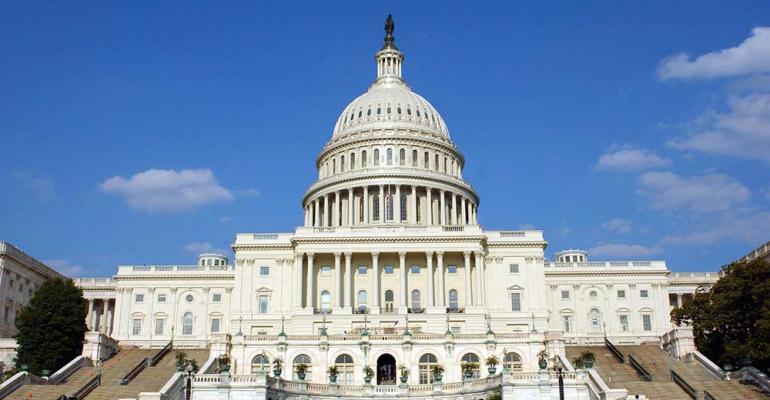Populism has been trending up worldwide in recent years, and its rise in the United States has serious implications for how lawmakers will tackle next year’s $4.6 trillion tax cliff.
In broad terms, populism manifests itself in public policy as proposals aimed at boosting working-class families. These populist perspectives can buck traditional priorities, like those from big business or other perceived political elites, as lawmakers seek to appeal to voters who feel left behind. Each party has its hobby horses: on the left, it’s the ultra-wealthy, and on the right, it’s often legacy institutions like Ivy League schools. And proposals targeting wealth and perceived elites have a real chance of becoming law next year.
That’s because it’s not safe to assume either party will adhere to how they’ve traditionally approached tax policy. Things used to be more straightforward. Democrats would trade tax cuts for other priorities, like investing in social services, and Republicans would pursue pro-growth, business-friendly tax breaks. Populist leanings are bending the traditional left-to-right ideological spectrum into something resembling a political horseshoe, with the far left and far right more closely aligned on economic issues.
Indeed, we’ve seen plenty of populist proposals with bipartisan support. Strange bedfellows emerge, like Sen. J.D. Vance (R-OH), Trump’s freshly-minted VP pick, and Sen. Elizabeth Warren (D-MA), a leading progressive, who joined together to introduce legislation targeting bank executives whose institutions fail. If you don’t believe us, perhaps take Sen. Vance at his word: “The people on the left, I would say, whose politics I’m open to — it’s the Bernie Bros.”
A Serious Shift
This marks a serious shift from our political environment when Congress cut the corporate tax rate by 40% (from 35% to 21%) and temporarily lowered individual tax rates across the board in 2017. Populist proposals aren’t on the sidelines any longer. President Biden has his Billionaire Minimum Income Tax (which actually taxes wealth and hits individuals with more than $100 million), and former President Trump’s idea to exempt tips from income taxes, a clear appeal to working-class individuals, made it into the Republican National Committee’s 2024 platform. The proposed exemption also quickly picked up support from Nevada’s Democratic senators, one of whom (Sen. Jacky Rosen) is facing a tough reelection in the state with more tipped workers per capita than any other in the nation. Talk about strange bedfellows.
Predicting the future is hard, and polls don’t yet paint a clear picture of who will control Washington next year. But most Republicans and Democrats are running on preserving some of the trillions of dollars worth of tax cuts set to expire next year (that is, the $4.6 trillion tax cliff). Many on the right, including the House’s lead tax writer, Rep. Jason Smith (R-MO), are open to cutting taxes further through targeted measures focused on working-class families. So, potentially costly tax cuts will be on the table next year regardless of who wins the White House and controls Congress.
Targeting the Wealthy
Preserving cuts and potentially adding new ones, especially for wealthy individuals and small businesses, will be expensive, and our ballooning debt is raising concerns, meaning lawmakers will likely be searching for revenue to pay for these cuts next year. When you couple these deficit concerns with rising populism on the left and right, proposals targeting groups with wealth or perceived power and status could gain traction in ways unseen in recent years. If we find ourselves in a divided government, those strange populist bedfellows might have an even better opportunity to advance their proposals.
With Biden’s proposed billionaire’s tax and comments from other leading Democratic tax writers, Democrats have clearly signaled they’ll look to the wealthy to increase tax revenues. On the right, we can look back to the 2017 tax season when a few populist proposals did find their way into a larger tax package.
To help pay for Trump’s 2017 cut to the corporate tax rate, GOP lawmakers capped deductions on state and local taxes, a provision that disproportionately hiked taxes on earners and wealthy individuals in high-tax blue states. The move was primarily viewed as political retaliation against Democrats and an appeal to Republican lawmakers in low-tax red states. The TCJA also enacted a 1.4% excise tax on the largest college and university endowments as a pay-for. Much like the state and local tax deduction cap, many viewed the move as a slight to liberal elites. In 2025, lawmakers could build on these provisions and may go after other pools of wealth, like inheritances, charitable dollars and private equity.
If it feels impossible to tell exactly which populist tax policies are on the table, it’s because all proposals seem to be. What was a trickle of populist policies in 2017 could become a wave in 2025, depending on the election. Democrat and Republican tax positioning is poised to become more focused as we approach November, but for now, what’s clear is that populists on the left and the right view next year as a major opportunity to leave their mark on the Tax Code.
Sara Barba and Sandra Swirski contributed to this article.
For more information on tax policy in 2024 and 2025, see “Setting the Table for Tax Policy This Year and Next” and “President Biden Releases Budget Proposal for Fiscal Year 2025.”





